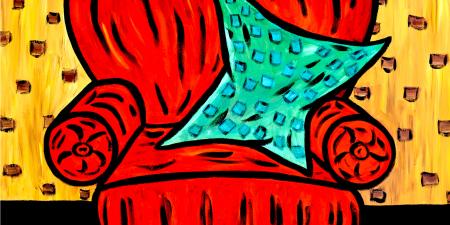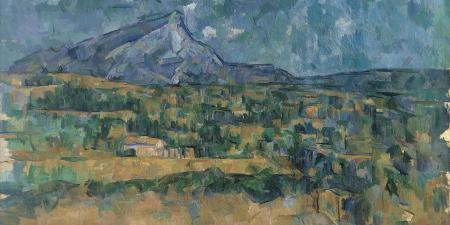Norman Rockwell described the essence of his artistic approach thus: "I guess I am a storyteller, and although this may not be the highest form of art, it is what I love to do."1 His chosen style was realism, intensified by a rigorous attention to closely observed detail, and his chosen subject was the commonplace.
In response to the current exhibition of his work at the Guggenheim Museum, there is renewed interest in his vision of American life and in his artistic status. For decades, while critics scorned his paintings as morally simplistic and artistically retarded, the general public has embraced both his vision and his naturalism. Now many critics are recognizing virtues that generations of viewers have seen. Perhaps our "period eye" is more attuned to the pleasures and merits of realism than that of the twentieth century critic who easily recognized and assimilated the visual cues of abstraction. Moreover, the so-called culture wars of recent years have revealed a vein of desire for an unshaded moral universe—for innocence.
This is where the paradoxes in Rockwell's work play their role. Certainly Rockwell's world is one where simplicity, goodness, and innocence are revealed and celebrated. Rockwell confessed that he couldn't "paint evil sorts of subjects."2 Yet he finds his subjects not among the privileged, the beautiful, and the talented, but among the recognizably ordinary, the gawky, the wholesome, the plain. His subjects are innocents who often arouse a somewhat amused indulgence. Simultaneously, they serve as reminders that the world is never unambiguously innocent. That is the source of the paradox and of the viewer's tender protective response.
As Arthur C. Danto observed, "Rockwell not only shows us situations with which everyone was familiar, he showed them as having the feelings that go with being in those situations. But more takes place in the typical reader than recognition. The reader is moved or touched by the feelings they display. And probably one is moved by the fact that one is moved, momentarily flooded with a feeling of warmth."3
This feeling of warmth may arise from an honest sentiment or it may be a gush of sentimentality—what has been defined as having more tenderness toward the subject than God would. Often the viewers of Norman Rockwell's work are uncertain which of these they are feeling. Perhaps both.
On March 9, 1929, The Saturday Evening Post cover was a Norman Rockwell vignette called "Doctor and Doll." It was one of hundreds of covers the artist painted on commission for that popular magazine. As was customary, the Post cover tells a story. A little girl, perhaps 7 or 8 years old, has brought her doll to the doctor's office. The doctor, a grandfatherly man with twinkling kindly eyes, is gravely listening to the doll's "heart" with his stethoscope. The trio float on a spatial island that, by deleting the room surrounding, concentrates the meaning of the image on the actors. Every object and article of dress works to reveal the status and character of the actors of this little drama. The viewer ("reader" Danto would call him) can read from the somewhat battered roll-top desk, the medical books, the candle sticks, the homey hooked rug, the doctor's chair with its worn rungs and armrests, that the central actor is a country doctor of comfortable but modest means, long in practice. He wears a fine black suit, a white shirt with crisp collar and cuffs, gold cuff links, well-shined black shoes, a natty cravat, and a signet ring on the little finger of his right hand. His face is ruddy, perhaps weathered (Rockwell often chose his models from New England villages), and its contours suggest a habitual cheerful benevolence, even humor. The sense of his humanity is accentuated by the shock of unruly gray hair that is in contrast with his sartorial fastidiousness.
The little girl who stands facing him proffering her "baby" for examination is well-nourished and warmly dressed. (The viewer knows that she has come to the doctor's office because she is still wearing her red tam, scarf, coat, and rubber boots.) She has braved the wet and cold of early March to bring her doll for the doctor's cure. She stands formally, even rigidly before the physician. The anxious little mother knows the rituals of office examination because she has removed the doll's dress, tucking it under her arm.
The story the image tells is of perfect trust. The "good mother" brings her "baby" to the doctor as she herself has been brought. She knows and trusts the customary medical rituals because she knows and trusts the doctor. He accepts the trust and enters into the child's creative play, listening gravely to the heart that isn't there.
The viewer may smile tenderly or indulgently at the timeless moment. This magazine cover is, however, also a kind of historical document, belonging to a certain period in American medicine. It is illuminating to set Rockwell's visual narrative in the context of another nearly contemporaneous narrative about science and medicine: Sinclair Lewis' Arrowsmith, published 4 years earlier.
Arrowsmith is a veritable Pilgrim's Progress through the landscape of early 20th century medicine in which Lewis sends his protagonist Martin Arrowsmith on a search for self-knowledge and maturity. He turns an iconoclastic fervor on the array of scientific movements, social issues, and cultural fads that accompany Arrowsmith on his journey toward middle age and professional success. Arrowsmith encounters corruption, ignorance, careerism, and hypocrisy as well as loyalty, kindliness, and fierce dedication to the principles of science. Lewis examines the etiquette of small-town practices and expensive clinics, attitudes toward public health, the fascination with eugenics, the fear of socialism, and the rise of bacteriology and immunology, and he employs a naturalistic style to expose the flaws in his characters and in his society. Verisimilitude works to establish credibility.
Verisimilitude and attention to the details of their chosen milieux are what Sinclair Lewis and Norman Rockwell share. Both aim at bringing about a frisson of recognition. Ah yes, I have known or seen a situation or person like that. It is useful, therefore, to explore where their aims and purposes part company. There is the question of scope. Lewis' vision takes in the whole range of social and psychological issues, and he describes how they interact. Lewis is astute in perceiving the personal foibles, anxieties, and ambivalences that drive individuals and communities. Arrowsmith is both the study of one man's character and tonic social criticism. Rockwell, by contrast, selects vignettes, revelatory frozen moments that seek to remind the viewer of a kind of goodness that is simple and innocent.
Saturday Evening Post readers certainly knew about the social problems (public health measures, for example) that Sinclair Lewis examines. From Arrowsmith one reads what parents in the 1920s knew intimately: childhood was dangerous. Diphtheria, pneumonia, tainted food, influenza were scourges even affluent parents feared. Presumably many had encountered the kind of venal, inept, or ill-educated doctors that populate Arrowsmith.
"Doctor and Doll" simply ignores that world. Instead, Rockwell offers a vision isolated, timeless. Details enforce this isolation: the floating central tableau, the furniture that was already outmoded in 1929. One detail, however, is especially significant. On the doctor's desktop, tucked behind his books, is a small group portrait that looks like Rembrandt's study of the anatomy faculty. Our doctor's black suit and crisp shirt (no doubt as recognizable to his contemporaries as is the doctor's white coat of today) links him visually to those somber pioneers of medical science—and emotionally to all physicians. He is the Good Doctor.
Analyzing the cumulative effect of the Rockwell oeuvre, Danto posits that the illustrations show American people as we see ourselves, and asks: "Do the tender feelings Rockwell's images instill define the default state of the American persona?"4 Do, then, the tender feelings "Doctor and Doll" instill define the default image of the doctor/patient relationship? Does this innocent interaction, so leisurely, so full of imagination and empathy and—perhaps—the tender condescension adults bestow on children—visualize for us an escape from the scientific, social, and ethical dilemmas and issues of our day? (It is not impossible to think that earlier Saturday Evening Post readers found it so.)
What might this default image represent? A flight from engagement with complexity? Or a refreshing but momentary contemplation of a kind of ideal?
References
-
Guptill AL. Norman Rockwell Illustrator. New York, NY: Watson-Guptill Publications; l946:xxi.
-
Moffatt LN. The people's painter. In Hennessay MH, Knutson A, eds. Norman Rockwell: Pictures for the American People. New York, NY: Harry N. Abrams, Inc.; 1999:26.
-
Danto AC. Age of innocence. The Nation. 2002;(7):48.
-
Danto, 50.



